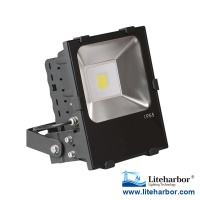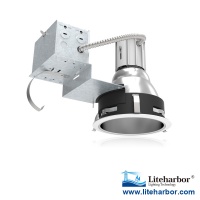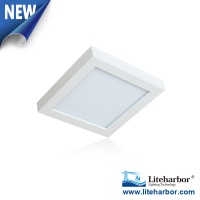What is the highest wattage light I can safely put in my light fixture
What is the highest wattage light I can safely put in my light fixture?
In other words, this isn’t about the physical size of the light bulb. As far as that goes, any bulb that will physically fit in the fixture is probably safe to install in it.
This is about the highest safe wattage because the “safety” in question is preventing a fire.
Why This Is Important?
If some of yours do, then that wattage is the highest you can safely install in that fixture.Installing any bulb that draws even a bit more current – like trying to use a 75W bulb in a fixture that has a 60W maximum rating, for example -- risks starting a fire.
The wires used inside lighting fixtures have insulation that has been tested to survive, and remain flexible, up to a certain temperature.
In newer fixtures that’s usually 90 degrees Celsius (90 ºC). That’s pretty hot. It’s 194 degrees Fahrenheit (194 ºF). That’s as much heat as the wiring can tolerate and still remain flexible and safe.
In older fixtures, the temperature limit for the wiring may be 60 ºC. That’s a good deal less. It’s only 140 ºF.
How Can I Tell?
A modern fixture that has a maximum wattage rating is required to have a label stating what that limit is. It will be visible inside the fixture when you have the light bulb out of it, if not otherwise.
The trick though, is figuring out where to stop if you have a fixture that is older than the requirement for the labeling. It’s safer to assume that is has the less heat resistant wiring, of course, unless you know otherwise.
But that still leaves the question of the highest safe wattage open.
General Assumptions and Rules of Thumb
The maximum safe wattage of a fixture depends on three factors. One is how much heat a given light bulb generates. Another is the maximum heat tolerance of the wiring used in the fixture. The third is how enclosed or open the fixture is.
The maximum safe wattage will be higher if the fixture is open, especially if it’s open on the top In other words, the more easily the heat from the bulb can escape, the larger the bulb can be.
Light fixtures that have an open path above the bulb for the heat to escape can take the bulbs that generate the most heat. Table lamps and floor lamps that have an open-top shade, or no shade at all, are among these. A torchiere floor lamp that takes a high-intensity halogen bulb is a prime example. These fixtures may not come with a maximum wattage limit.
Pendant lights and wall sconces, which hold the bulb away from the ceiling in open air, will usually have a fairly high wattage limit. It will be higher if the fixture is open, and especially if it’s open on the top. Open-sided fixtures which are mounted flush to the ceiling are more restrictive, then closed flush-mount fixtures. The most restricted fixtures are the can which take reflector flood lamps – the ones that are mounted on track lights and, most importantly,recessed fixtures.
A recessed fixture is often made to be air tight, so that it can’t serve as a chimney to vent heat from your room up into your attic. That also means that there’s no path for the heat generated in it to escape by convection, since there’s no air flow.

 RESOURCE
RESOURCE




